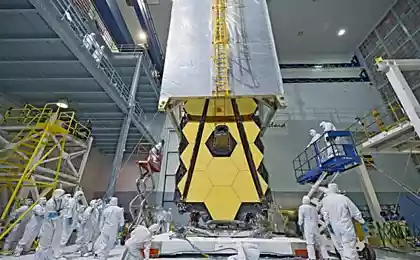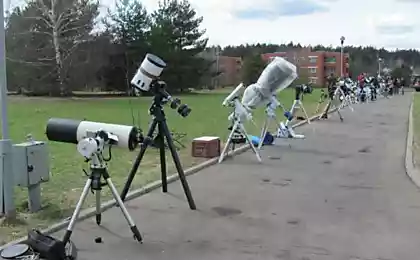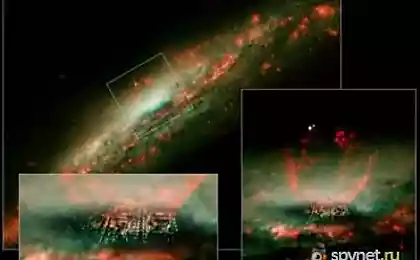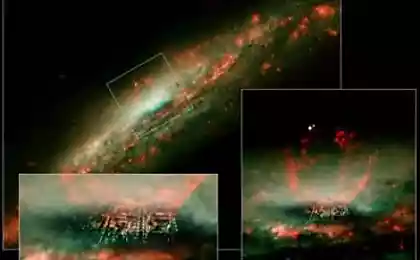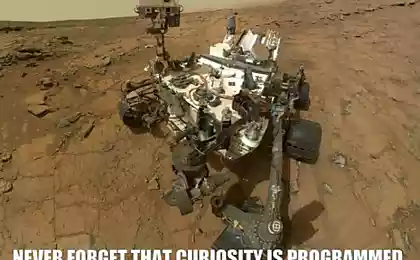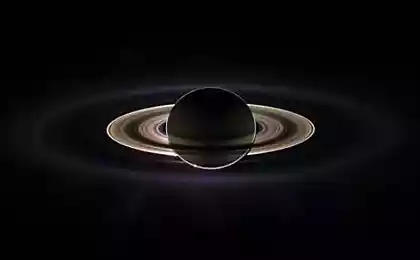1294
NASA is developing a new optics for space telescope
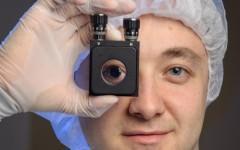
The new technology will see on the planets for signs of life, such as oxygen and liquid water
Despite the fact that in the last 15 years have been discovered hundreds of planets orbiting other stars, we still can not answer the perennial question of whether there is life on any of these planets. However, new technology, NASA can make a difference by providing the opportunity to observe not only the planets similar to our size, located in a potentially habitable zone of its star, but also the opportunity to see such signs of life, such as oxygen and liquid water.
Scientists at the Research Center of NASA "Ames" in Moffitt Field, California, to develop new optics space telescope, which is able to not only detect planets similar to Earth, but also to photograph them. To create such pictures called 'direct visualization', the new technology will be used as a technique called phase induction amplitude apodization (PIAA). Apodization Development began in 2003, and during that time managed to demonstrate the correctness of the concept of ideas and technology. The researchers tested the prototype, and the project should be implemented during the upcoming space missions, organized by NASA to obtain images of exoplanets. The mission itself is planned for the 2020s.
"By blocking the glare and diffraction from the star, we can see those planets that without the new technology would be hidden. Thanks to the new product, we first obtain a direct image of exoplanet potentially habitable zone "- says Ruslan Belikov, an astrophysicist at NASA and the technical team leader in the Ames engaged in experimental development coronagraph.
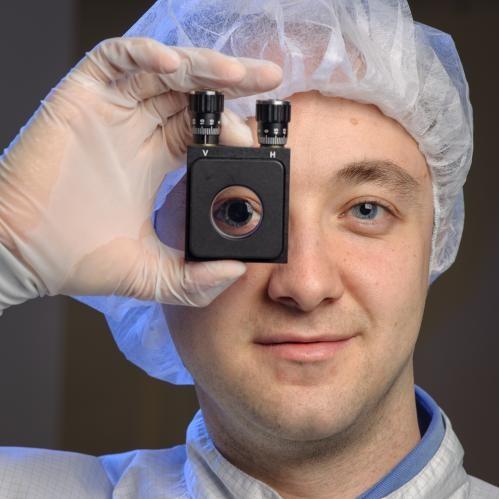
PIAA system uses two specially designed aspherical optical device to change the light in the "vision" of the telescope and make this light "high contrast", suitable for photographic images. Photo from nasa.gov
Today, scientists generally use indirect methods, one of which, for example, is the "transit method" to detect planets outside the solar system. In accordance with measured dimming star when the planet passes between it and the line of sight of the telescope. Watching the stars lighting changes, scientists can determine the size of the planet, its distance from the star and its orbital period. This method is currently used by the mission "Kepler", launched by NASA in 2009; its purpose is to find a potentially habitable zone planets similar in size to Earth.
In the future, however, for the detection of biomarkers of life, such as oxygen and liquid water on planets that resemble Earth, orbiting a star similar to our sun, a different approach will be used in design and concept. PIAA has the ability to "direct visualization," which refers to the actual photograph exoplanets. The difficulties in creating such pictures that the brightness of the star causes diffraction and reflections, lighting orbiting planet. To solve this problem, the telescope is necessary to suppress the diffraction of light stars.
PIAA system uses two aspherical mirrors specially designed to convert light sensors registered a telescope, a new facility is recognized by their high contrast. This new high contrast is able to suppress diffraction and turn the bright light from the stars in the image in a small spot, which effectively blocks the light emitted by the star, which, however, does not affect the perception of the light emitted by the planets. Tools that block the light of the stars, commonly referred to as "coronagraphs"; originally they were designed to lock radiance of the Sun, so that we can see its outer shell of gas or crown. PIAA - is a kind of a particularly powerful type of the coronagraph, set up on the edge of modern knowledge of physics.
Telescope optics has tiny defects, so-called aberration, which causes image blurring in the star. At the present level of development of our civilization is not possible to create an entirely free from aberrations of the optics, but can be adjusted by means of separate mirrors that can rapidly change their shape. "Such mirrors are called deformed. They warn potential distortion optics of the telescope, "- said Belikov. PIAA coronagraph or a whole block of stars shine, but they are able to show the planet earth requested only if the size of the telescope optics is perfect, which never happens.
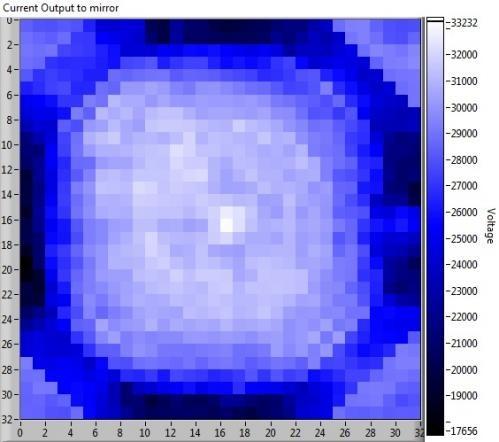
Telescope optics has tiny flaws called aberration, which causes blurring in the images. Photo from nasa.gov
Deforming mirror correct these deficiencies through its control system wavefront. This system of "fixes" imperfect fragments of a telescopic optics to coronagraph could not work properly.

The top photo is a sample created by deforming mirror. Any distortion can be adjusted like a mirror, able to actively change the shape.
Experimental coronagraph with deforming mirrors have been constructed in the "Ames" Boston Corporation micromachines. They are squares measuring 1 by 1 centimeter, in which are embedded mesh size of 32 \ 32 cells and actuator 1024, respectively. They can generate any desired shape on the mirror. By controlling the shape of the surface of the deformable mirror, it is possible to reduce aberration in a telescope so that it could fully capture the photograph of the planet the size of Earth.
"The surface of these distorting mirrors so biodiversity and has a high degree of accuracy, that we are not even able to measure it," - commented Belikov.
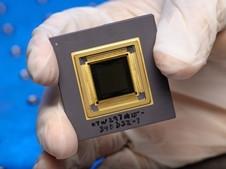
Each mirror is a square measuring 1 by 1 centimeter. Mainly used mesh size of 32 \ 32 cells, or 1024 actuators that are capable of creating any desired shape.
Despite the fact that the decision was made to further improve PIAA, the technology is ready to undertake its mission. There are two varieties of it: one is designed for small telescopes, the other - for very large. To carry out the mission in September 2011, organized by NASA, the telescope has been selected one of small size Exoplanetary Circumstellar Environment and one large telescope Disk Explorer (EXCEDE).
Under the leadership of the University of Arizona in Tucson, in partnership with the Research Centre "Ames" and the company Lockheed Martin Space Science largest telescope will be sent to Earth images of circumstellar dust and debris, as well as images of the major planets in habitable zones, but this does not apply to planets similar to Earth.
«EXCEDE done a great job and will be a harbinger of a great mission, but just enough to photograph exoplanets" - explains Belikov. To see the Earth-like planet, we need a much bigger telescope. The team that develops the coronagraph in the "Ames" but work on EXCEDE, is also working with the Jet Propulsion Laboratory (JPL) of NASA in Pasadena, to create a coronagraph technology adapted for the big telescopes can observe exoplanets. Currently, two independent of each other teams are developing different types of technologies coronagraph.
"Coronagraph to date was in the air, but not in a vacuum. Our team advanced in the development of this technology so that it is ready for vacuum test "- commented Belikov.
Understanding quantum chromodynamics help collider experiments
The most hot peppers in the world: Trinidad Scorpion Moruga Blend



